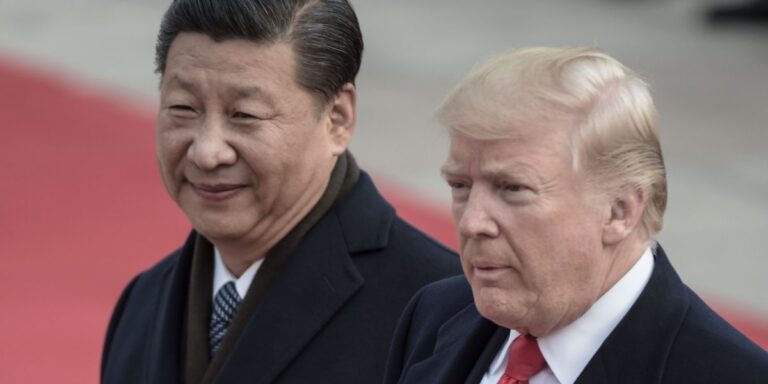Republican presidential candidate Donald Trump has said he could impose a 60% tariff on Chinese imports if returned to the White House, and new analysis predicts that this would dramatically slow growth in the world’s second-largest economy and push it to the brink of deflation.
UBS economists took into account the impact of President Trump’s 2018 tariffs on China and presented a simplified model of how a new round would play out, assuming China doesn’t retaliate, other countries don’t match the U.S.’s tariffs and some trade flows to other countries.
They estimate that a 60% tariff would reduce China’s GDP growth by 2.5% over the next 12 months, with roughly half of this decline coming from a decline in exports and the rest from indirect effects on consumption and investment.
Beijing’s stimulus measures to cushion the impact of the tariffs are expected to ease the economic slowdown by 1.5 percentage points, and UBS estimates that GDP growth could fall to about 3% in 2025 and 2026 if the tariff hikes take effect in mid-2025, below the bank’s baseline forecasts of 4.6% and 4.2%, respectively.
“In the longer term, rising exports and production from other countries could mitigate the impact of higher U.S. tariffs, but there is a risk that other countries could raise tariffs on Chinese imports,” UBS economists said in a note published on Monday. “Furthermore, the lingering effects of weaker employment and capital investment will also weigh on the domestic economy.”
If China were to retaliate in kind, the economic impact would be more severe, while weaker tariffs would have a smaller impact, the report added.
But even the threat of these tariffs alone could deal a blow to China’s economy: Even if the tariffs are reduced or avoided, “some economic damage will be inevitable as producers and U.S. importers move away from China to avoid risk and uncertainty,” UBS warned.
China’s economy is already slowing due to the ongoing collapse in real estate prices, weak domestic demand, high local government debt and expanding trade restrictions imposed by the Biden administration.
GDP grew 4.7% in the second quarter, down sharply from 5.3% growth in the previous quarter and below the government’s 5% target, and a recent meeting of policymakers showed few signs that Beijing was ready to take aggressive steps to stimulate the economy.
Meanwhile, demand in China is so weak that consumer prices rose just 0.2% annually in June, while producer prices have already started to fall.
The UBS report noted that the 60% tariffs would weaken demand and intensify price competition, adding further deflationary pressures, leading to domestic producer prices continuing to trend downwards in 2025 and the core consumer price index hovering around 0%.
That means overall consumer price inflation could hover around 0.5% for the next few years — up to 1 percentage point lower than the bank’s current baseline forecast.
Views of the Chinese economy were already darkening even before President Trump’s election chances increased and new tariffs became more likely.
“Years of erratic and irresponsible policies, excessive Communist Party control, and unfulfilled promises of reform have left China’s economy mired in a tailspin of weak domestic consumer demand and slowing growth,” said Anne Stevenson Yang, co-founder of J Capital Research and author of “The Future of China’s Economy.” A Wild Ride: A Short History of Opening Up and Closing Down the Chinese Economyteeth, The New York Times May editorial.

